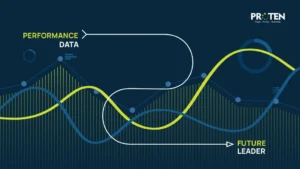05 February 2024
The Role of Leadership in employee Performance

When Rob Burn, president of L&L Solutions, was asked his view on performance management, he said this: “Performance should be an expectation of employment, and it is the leader’s job to create an environment where maximum performance is possible.”
In the pursuit of organizational success, few factors hold as much weight as employee performance. Yet, this performance isn’t solely a function of individual skills or external factors. At the heart of a thriving, high-performing workplace lies the invaluable influence of leadership. This article delves into the crucial connection between leadership and employee performance, offering a practical guide for decision-makers seeking to unlock the full potential of their teams.
Evaluating Leadership Styles on Employee Performance
A study by the Arabian Journal of Business and Management Review investigated the unique impacts of each leadership style on employee performance.
The autocratic approach was found to be best for short-term performance. The study revealed that authoritarian leaders are suited for teams that are made up of new employees. This is because authoritarian leaders are best at defining solutions to challenging business problems.
The democratic approach was shown to be effective in both the short and long term. Researchers found that requesting team members’ opinions produced a feedback loop that increased not only production but also morale.
The participative approach proved suitable for the long term, with a positive impact on employee performance. The style was found to lead to a positive work environment where innovation was encouraged.
Leadership Strategies for Enhanced Performance
Leadership plays a multifaceted role in shaping employee performance. It’s not just about giving orders and expecting results; it’s about creating an environment where individuals feel empowered, motivated, and equipped to excel. Here are some key roles leaders play in boosting employee performance:
- Setting the Vision: Effective leaders paint a clear and compelling picture of the organization’s goals and aspirations. This vision not only provides direction but also ignites passion and inspires employees to feel like part of something bigger than themselves.
- Empowering and Trusting: Micromanagement is anathema to high performance. Great leaders empower their teams by delegating tasks, providing autonomy, and fostering trust. This fosters responsibility, ownership, and a sense of creative freedom, leading to increased engagement and productivity.
- Communication and Feedback: Open and transparent communication is the lifeblood of any successful team. Leaders who actively listen, provide clear feedback, and encourage open dialogue create an environment where employees feel valued, heard, and motivated to learn and grow.
- Recognizing and Rewarding: Celebrating achievements, both big and small, goes a long way in boosting morale and motivation. Effective leaders implement recognition programs, offer timely feedback, and acknowledge individual contributions, fostering a culture of appreciation and continuous improvement.
- Leading by Example: Actions speak louder than words. Leaders who set the standard for dedication, integrity, and a positive work ethic inspire their teams to follow suit. Walking the talk showcases commitment to shared values, building trust, and strengthening the leader-employee relationship.
Decision-makers: Setting the tone
It’s important to remember that leadership extends beyond individual managers or executives. Decision-makers across all levels play a crucial role in shaping the overall leadership culture within the organization. By actively demonstrating the following, they set the tone for a high-performing workplace:
- Investing in leadership development: Providing training and resources to equip individuals with effective leadership skills fosters a strong talent pipeline and promotes a culture of continuous learning.
- Prioritizing a positive work environment: Fostering a culture of respect, inclusion, and work-life balance attracts and retains top talent, creating an environment conducive to optimal performance.
- Leading with transparency and accountability: Open communication about organizational goals, challenges, and decisions builds trust and empowers employees to be invested stakeholders in the organization’s success.
Final Thoughts….
The role of leadership in employee performance is undeniable. By implementing the strategies outlined above and actively prioritizing a culture of strong leadership, decision-makers can unlock the full potential of their teams, driving towards a thriving, high-performing organization. A leader does not hold a title but rather cultivates an environment where everyone can strive to be their best.
Proten International boasts a range of learning and development initiatives aimed at enhancing leadership skills. Reach out to us today. Let’s help you lead with purpose and watch your employees soar.
Join 2000+ Subscribers
Subscribe to Our newsletter to stay informed

UK: 5, Seacourt road, London. SE2 9UW
NIGERIA: 11a, Mojidi Street, off Toyin Street, Ikeja, Lagos.
GHANA: F393/4 Otwse street, Osu, Accra, Ghana
(+234) 901 278 1155
info@protenintl.com
Our Services
Latest Tweets
Lorem ipsum dolor sit amet, consectetur adipiscing elit. Donec nec metus libero. Aliquam non mauris.
Copyright © 2024 Proten. All Rights Reserved
Terms Of Service
Privacy
Cookies










